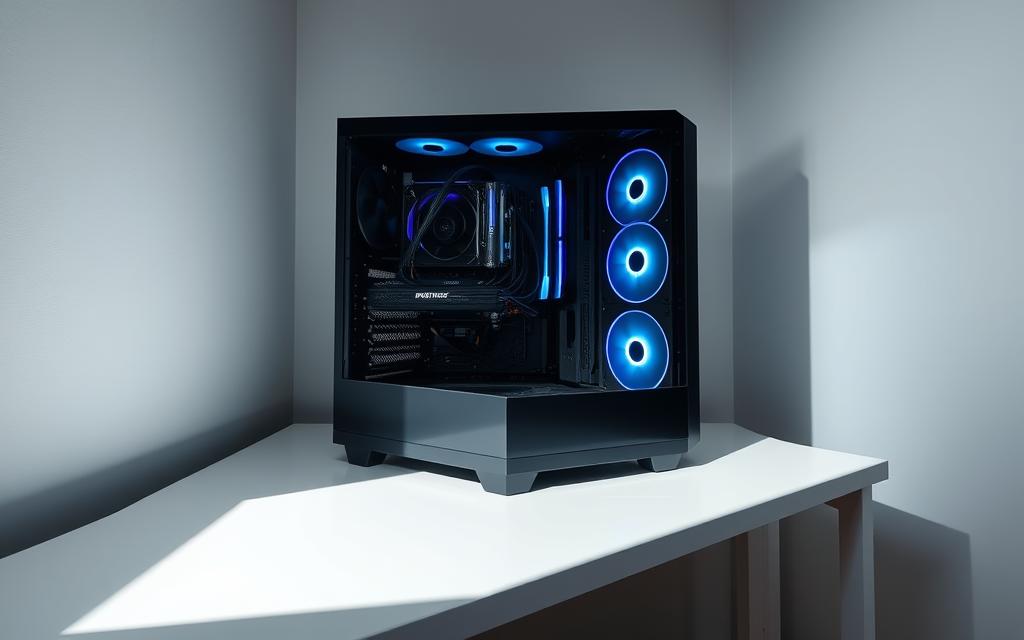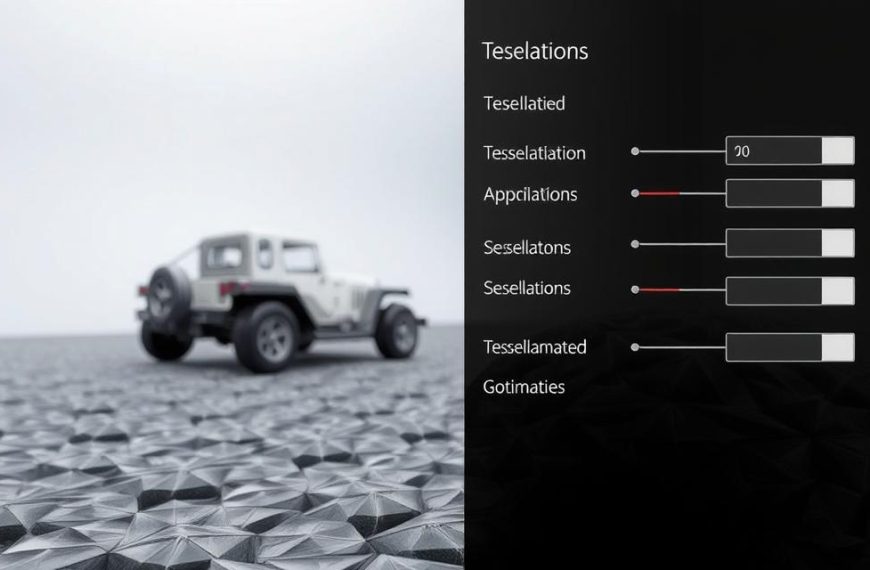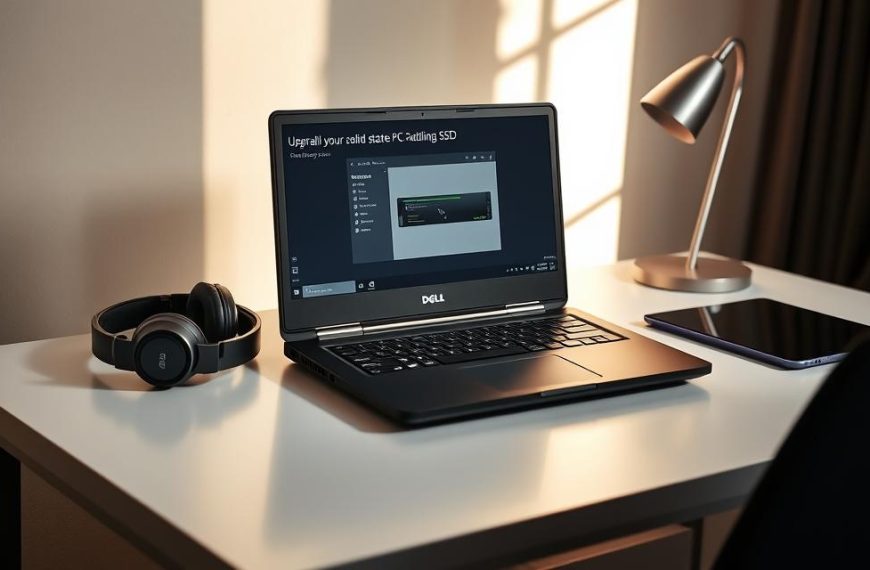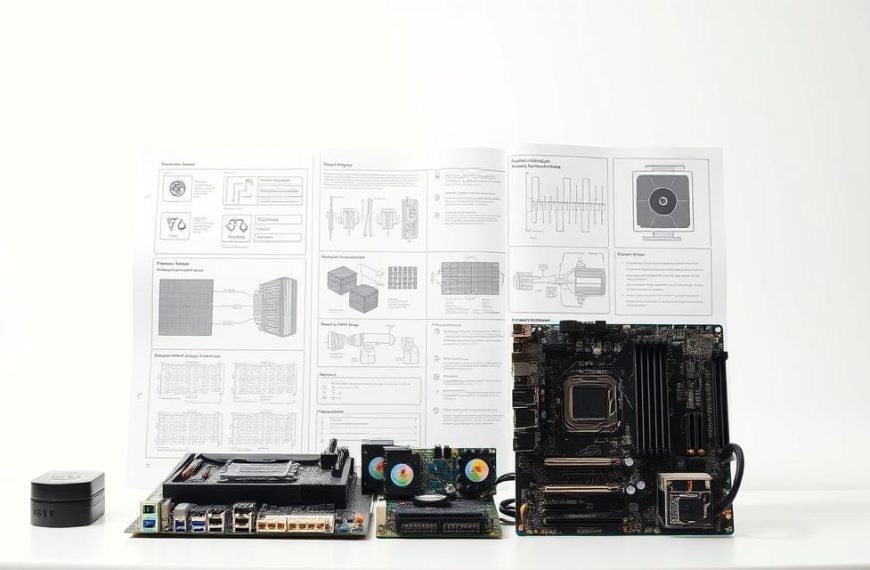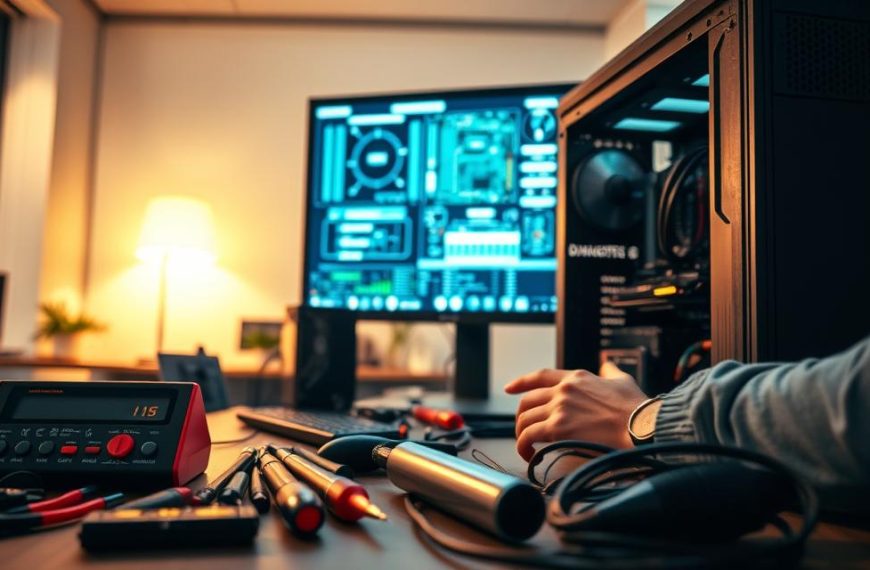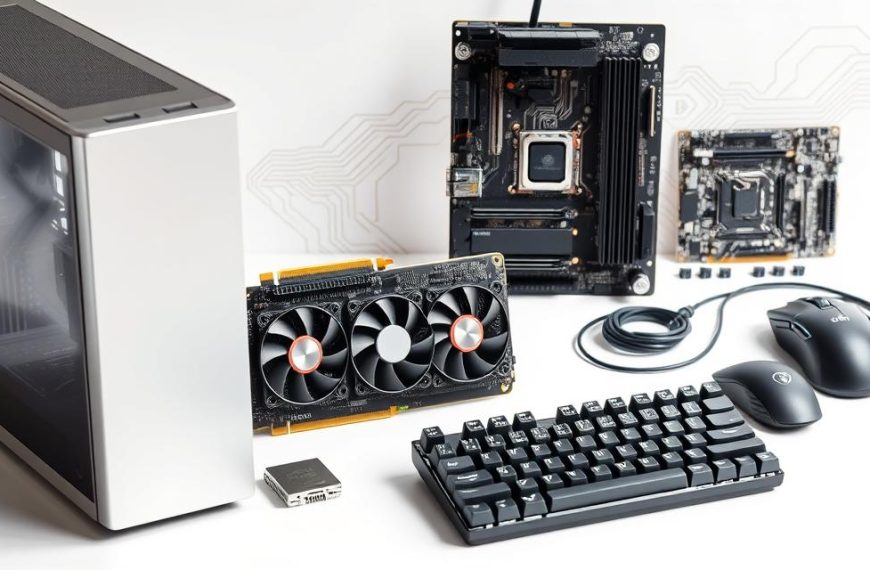Gaming PCs produce a lot of heat during intense use. Proper temperature control is vital for top performance. Good cooling needs careful planning and knowledge of heat flow.
Free space is crucial to stop parts from overheating. Small cases can limit fan placement and airflow. Gamers must choose cases wisely to ensure good heat removal.
CPUs and GPUs create much heat during graphics-heavy tasks. Liquid cooling can cut processor temperatures by half compared to air coolers. These systems are quiet, perfect for home and gaming setups.
Enough free space in a gaming PC is a must for lasting performance. Dust, poor airflow, and bad ventilation can harm system reliability.
Smart part placement and cooling know-how are key. These help build a strong gaming PC that can handle long sessions at peak performance.
Understanding the Fundamentals of PC Cooling Systems
Gaming PCs generate a lot of heat during intense use. Effective cooling is vital for keeping your system running smoothly. The right cooling method can boost performance and extend component life.
There are two main types of cooling: air and liquid. Each has its own benefits for managing heat in your PC.
Air Cooling vs Liquid Cooling Solutions
Choosing between air and liquid cooling depends on several key factors:
- Air cooling uses heatsinks and fans to disperse heat
- Liquid cooling circulates coolant through specialised tubes and radiators
- Liquid cooling can reduce temperatures by 20-30% compared to air cooling
The Impact of Component Temperature on Performance
Component temperature affects system stability and performance. Too much heat can slow down processing and damage delicate electronic parts.
Here are some key temperature guidelines:
- Ideal CPU temperatures range between 30-50°C under normal load
- Graphics cards should maintain temperatures below 80°C
- Consistent high temperatures can reduce component lifespan
Basic Principles of Heat Dissipation
Good heat dissipation moves thermal energy away from important parts. Liquid cooling works better than air cooling. Water conducts heat about 25 times better than air.
Proper cooling keeps your gaming PC reliable and ready for tough tasks. It helps your system run efficiently, even during intense gaming sessions.
Does Gaming PC Need Free Space for Cooling
Gaming PC airflow is vital for peak performance. Proper cooling space can prevent thermal issues and keep your machine running smoothly.
PC ventilation requires careful planning. Experts suggest leaving two to three inches of free space around your gaming computer. This space allows air to circulate, stopping heat from building up.
- Restricted space can lead to rapid temperature increases
- Adequate clearance enables efficient heat dissipation
- Proper ventilation prevents potential hardware damage
Ignoring cooling space can have serious effects. Overheating can shorten component life and slow performance. It may even cause lasting hardware damage.
- Reduced component lifespan
- Performance throttling
- Potential permanent hardware damage
To keep your gaming PC cool, try these tips:
- Install intake and exhaust fans
- Maintain clear pathways for airflow
- Regularly clean dust from cooling components
Your gaming PC is valuable. Giving it enough space to cool is a small task. It will help your system perform better and last longer.
Strategic Component Placement and Airflow Management
Creating an efficient cooling system for your gaming PC requires careful planning. The internal layout affects temperature and performance. Proper component placement and airflow management are crucial.
Effective airflow management relies on understanding heat dissipation and component positioning. The aim is to create a clear path for air movement. Cool air should enter easily, while hot air exits swiftly.
Optimal Fan Positioning for Maximum Effect
Fan positioning is vital for efficient cooling. Here are some key strategies to consider:
- Install intake fans at the front of the case to draw cool air in
- Place exhaust fans at the rear and top to expel warm air
- Aim for a balanced airflow configuration with slightly positive air pressure
Most PC cases come with pre-installed fans, usually 120mm or 140mm in size. Many enthusiasts suggest using front and rear fans for optimal air circulation.
Cable Management and Air Path Optimisation
Proper cable management is crucial for clear air paths. Tangled cables can obstruct airflow and create heat traps. Use cable ties and routing channels to minimise disruption.
Ventilation Zones and Their Importance
Different areas of your PC case need specific cooling attention. Critical ventilation zones include:
- CPU cooler area
- Graphics card zone
- Power supply region
- Storage drive locations
Careful management of components, fans, and cables can boost cooling efficiency. This approach enhances your gaming PC’s overall performance and longevity.
Advanced Cooling Solutions and Space Considerations
High-performance PC cooling is crucial for gaming enthusiasts. Water cooling kits offer a sophisticated solution that surpasses traditional air cooling methods. These kits are ideal for overclocking and thermal management.
Liquid cooling systems provide remarkable benefits for gamers and power users. They offer lower temperatures, reduced noise, and better overclocking potential. Additionally, these systems are more compact than air cooling solutions.
- Significantly lower component temperatures
- Reduced noise levels compared to air cooling
- Enhanced potential for overclocking
- More compact thermal management
Water’s exceptional thermal conductivity makes liquid cooling highly efficient. A well-designed liquid cooling system can reduce CPU temperatures by 20-30% compared to traditional cooling methods. This allows for more aggressive overclocking and sustained high-performance computing.
| Cooling Type | Temperature Drop | Noise Level | Space Efficiency |
|---|---|---|---|
| Air Cooling | 10-15% | 35-40 dBA | Low |
| Liquid Cooling | 20-30% | 20-25 dBA | High |
Gamers must consider case compatibility and radiator sizes when using water cooling kits. Popular radiator options include 120mm, 240mm, and 360mm sizes. Each size offers different cooling capacities for high-performance PC cooling.
Custom liquid cooling setups can boost performance significantly. They enable overclocks 10-30% higher than air-cooled systems. Investing in advanced cooling solutions improves system longevity and computational performance.
Conclusion
Optimal PC temperature requires strategic cooling system maintenance. High-performance gaming rigs need careful attention to prevent overheating. CPU temperatures can reach 176°F during intense gaming sessions.
Proper cooling solutions are vital for system longevity and peak performance. Understanding your system’s thermal dynamics is crucial for gaming PC cooling efficiency.
Regular maintenance includes cleaning dust from components and ensuring proper airflow. This can greatly reduce overheating risks. Advanced cooling methods like AIO liquid cooling systems offer better temperature control.
Being proactive is key to protecting your investment. Monitor system temperatures and maintain clean vents regularly. Choose cooling solutions that match your performance needs.
Air or liquid cooling both aim to keep your gaming PC cool and quiet. This ensures your system runs at its absolute best.

